Batting Tips
Is Stumping Allowed in Free Hit?
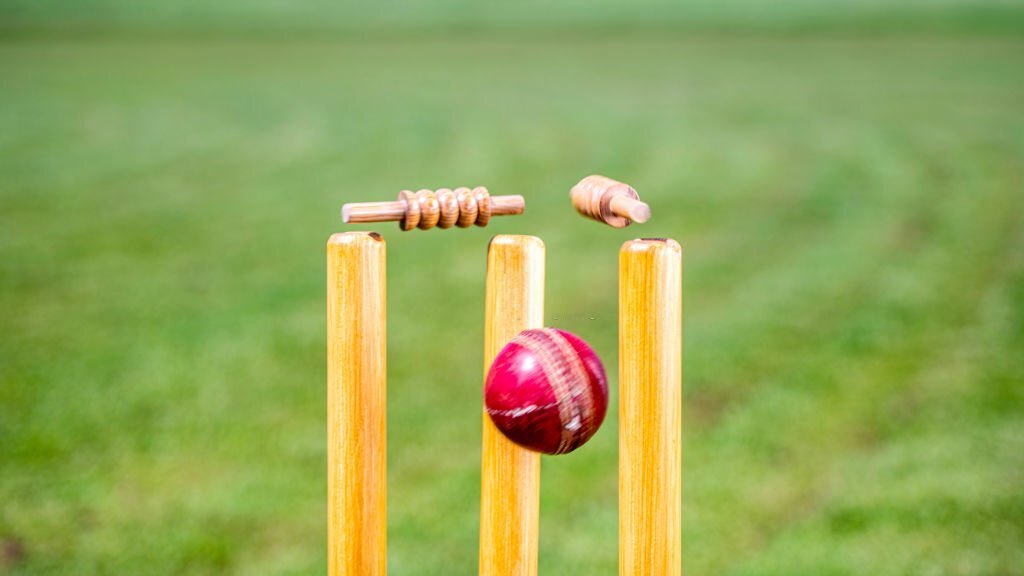
Imagine this: you’re a cricket player, you’re on the batting side, and the umpire has just signaled a free hit. The adrenaline pumps as you anticipate the upcoming delivery. As a child, you might have dreamt of these moments, the opportunity for a free swing. let’s discuss more Is Stumping Allowed in Free Hit?
Explanation of the concept of a free hit in cricket
Cricket is the only sport that has free hits, which come from the limited-overs forms. They make the game of cricket more interesting and put the batters in a much better position. So, let’s get down to what really matters.
When a bowler steps out of their lane or throws too high above their waist, this is called a “no-ball,” and the batter gets a free hit. On the next pitch, which is called a “free hit,” you, as the hitter, have a bit of an advantage. Even if you get caught, bowled, leg-before-wicket, or other popular ways to get out, you will not be out. But one question seems to always be up in the air: Can a free hit stop you?
When it looks at the rules set by the International Cricket Council (ICC), it says that all of the ways a player can be out under the Laws of Cricket stay the same, except for “caught,” “bowled,” and “leg before wicket.” This means that you can still be stumped. Yes, you are right. If your plan is to leave your place after missing the ball, you need to be quick enough to get back before the wicketkeeper removes the bails, or you could be out of the game.
It might seem unfair, but keep in mind that the unexpected rules of cricket are what make it such a fun sport. Now that you know this, don’t forget about stumping risks the next time there is a free hit.
It might seem unfair but remember those are cricket’s unpredictable rules that make it such an exciting sport! Now armed with this information next time there is a free hit, don’t forget about stumping risks.
Stumping in Cricket


if you are not familiar with Stumps and stumping in cricket, you should read this first : What is stump out in cricket
Entering the world of cricket can be quite a whirlwind, with codes, rules, and terminologies to understand. But don’t feel overwhelmed. You are tackling an exciting subject today: stumping during free hits.
Definition and rules of stumping in cricket
The simplest definition of stumping is when a wicketkeeper removes the bails while a batsman is out of his crease and not attempting to run. In cricket, games are frequently decided by mere centimeters, particularly during the final overs or the playoffs. As with the majority of cricket’s rules, the laws regarding stumping contain nuances and exceptions.
In a typical circumstance, you would assume that stumping would be an easy way to eliminate a batsman. However, when it comes to Free Hits after a no-ball, the rules are somewhat different. Let’s delve deeply into this topic.
A free strike in cricket prohibits the fielding team from putting the batsman out by any means involving the wicket. Essentially, the only way to loose a wicket on a free strike is to be run out.
Then, how about preventing a free hit? The response is complex. According to cricket laws, if the batsman steps out during the free hit delivery and misses the ball while attempting to play it, he cannot be stumped. The player is permitted to move beyond his crease without being halted.
Understanding the role of stumping and knowing when it isn’t permissible (like during a free hit) can add new dimensions to your appreciation of cricket. Use this knowledge to enrich your viewing experience or surprise your friends with some sporting trivia.
Free Hit Rule


Consider yourself standing at the crease, ready for the next delivery. Last ball, the bowler overstepped and the umpire called a no-ball. This one’s a free hit for you! But wait, can you get stumped on a free hit? Let’s explore.
Explanation of the free hit rule and its purpose
The free hit rule, which was implemented to make cricket more thrilling, prohibits the majority of dismissals on the next delivery following a No-ball. Due to an error in their delivery stride, the bowler has conceded an advantage to the batter. Sounds like the perfect ticket for rogue cricketers!
Yes, you cannot be bowled out, caught, leg before wicket (LBW), or strike wicket during a free hit delivery. However, this does not imply that all methods of dismissal are acceptable. If you are found outside your crease while batting, with the wicketkeeper or another fielder holding the ball behind the stumps, you are out–stranded.
If your back foot crosses behind the crease while taking a wild swing at a free-hit delivery, and the keeper is vigilant enough to capture and remove the bails immediately, it’s bad news. The law does not provide immunity against being unable to score on a free strike.
This gives the sport a fantastic element of unpredictability. It strikes an intriguing equilibrium between engaging in fearless striking and avoiding errors at the crease.
Now you know what you need to do when eyeing that juicy free hit – go for it but make sure you stay within your crease!
Allowed Dismissals on a Free Hit
As a cricket enthusiast, you’ve probably come across the concept of a free hit. In cricket, a free hit is a delivery to a batsman in which he or she cannot be dismissed by most methods. It’s usually awarded immediately after a bowler bowls a no-ball. Especially if you’re new to the sport, there might be some confusion around what types of dismissals are allowed during this phase.
Discussion on the dismissals that are allowed on a free hit
One important aspect to consider in understanding this rule is the possibility of being stumped off a free hit. Basically, ‘stumping’ entails being out of your ground not attempting a run and knocked out by the wicket-keeper. So, in cricket, can you be stumped off a free hit?
The Laws of Cricket, maintained by the Marylebone Cricket Club (MCC), offer clear guidance on this. According to Law 21.16, there are certain conditions for dismissal during free hit following no ball. The batsman may be dismissed only under the conditions of run out, obstruction of the field, hitting the ball twice or handling the ball.
This subtly means that ‘stumping’ during a free hit does not count as an official dismissal. Consequently, if you step out of your crease to play an excessively ambitious shot and miss, finding yourself ‘stumped’, don’t fret.
In conclusion, understanding these laws can enhance your appreciation for the game and also improve your performance during play. As you now know that stumping is not allowed in a free hit situation, plan your stroke-play with composure and confidence during those crucial moments of the game. Recognizing these nuances can indeed make cricket much more enjoyable and exciting to watch and play.
Is Stumping Allowed on a Free Hit?
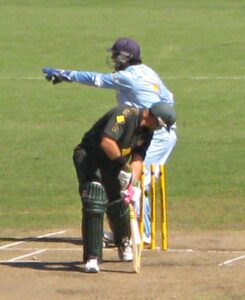

As a cricket fan, you may have seen this happen in matches – the batsman misses the ball on a free hit, and the wicketkeeper attempts a stumping. But is it a legit dismissal? You’re about to find out.
Explanation of whether stumping is allowed on a free hit or not
Here comes the answer straight and simple – yes, stumping is allowed on a free hit. While a free-hit delivery safeguards the batsman from being ruled out in most modes of dismissals like LBW or caught out, it doesn’t extend to stumping. If you’re new to cricket’s intricate rules, a stumping is where the wicket-keeper (the player standing behind the stumps with gloves) catches the ball and hits the stumps before the batsman makes it back into his crease after stepping out.
However, this isn’t a common scene. Why, you ask? Well, because batsmen are extra cautious during free hits as they can fancy big shots without worrying about most forms of dismissals. Batsmen usually make abundant efforts not to venture too far from their crease to avoid getting stumped.
But when such instances do occur, they create memorable moments just by their rarity and unexpectedness. A successful stumping during a free hit displays not only quick reflexes from the wicket-keeper but also testifies to the unpredictability that makes cricket such an exciting game.
In conclusion – yes, while it may seem unusual, stumping is very much possible and allowed in the game during a free hit. As long as you are a fan of cricket’s unforeseen thrill, it’s certainly an aspect you would love.
ICC Regulations
In your journey as a cricket enthusiast, it’s normal to be unsure about certain rules. Let’s look at the nitty-gritty of the International Cricket Council’s regulations regarding stumping on a free hit.
Explanation of the International Cricket Council’s regulations regarding stumping on a free hit
While watching a cricket match, you might have noticed that a bowler delivers a no-ball, which is followed by a free hit. The excitement peaks as the batsman gears up to play a shot without the fear of getting out, except through a run-out. But did you wonder if stumping is allowed in this scenario?
According to the International Cricket Council (ICC), stumping is indeed permitted on a free hit following a foot-fault no-ball. The rules stipulate that the batsman can be dismissed through run-out or stumping only after he or she strikes any part of the ball, regardless of whether it’s in mid-air or after it has touched the ground.
Furthermore, it’s important for you to comprehend that when you’re stumped off a free hit, it’s not deemed as out by being bowled or caught behind. Instead, it is recorded as ‘stumped.’
However, it’s fairly uncommon to witness a batsman being stumped off a free hit. It’s because cricketers usually attempt bold strokes during free hits knowing that they won’t get out as long as they don’t leave their crease.
Same rules applies in T20 and One Day International (ODI) games. Hence, the buzz during a free-hit delivery comes with its own caveat – stray too far from your safety zone, and you might find yourself walking back to the pavilion.
Remember, understanding these intricate details can enhance your appreciation of the game and bring more joy to your viewing experience! Understanding these aspects of cricket rules may seem minor at first, but they contribute massively to your overall understanding and love for cricket!
Controversies and Debates
In the world of cricket, rules are crucial, governing every intricate detail of gameplay. Among the numerous FAQs studied by cricket enthusiasts, perhaps an ongoing debate revolves around one — is stumping allowed in a free hit? Matters on this are indeed filled with controversies and debates.
Discussion on the controversies and debates surrounding stumping on a free hit
For starters, you need to understand what ‘free hit’ really means. Instituted by the International Cricket Council (ICC), a ‘free hit’ is awarded after a no-ball, providing the batting team with an opportunity to score without risk of losing wickets except via run outs.
Issue surfaces when one tries to comprehend whether a batsman can be dismissed by ‘stumping’ during a ‘free hit.’ This question has brewed many disputes since it’s not clearly explained under the ICC rules.
On one hand, some argue that ‘stumping’ should be allowed during a ‘free hit’, with proponents citing dismissal methods permitted for a ‘free hit’ – specifically run out or handball. They believe that since ‘stumping’ is closely related to ‘run out,’ it should also be admissible on a ‘free hit.’
However, others adhere strictly to ICC’s laws where it’s outlined that only run-out is a legal form of dismissal on a free hit. To them, clearly codified rules should be followed without retort to interpretative flexibilities.
This inherent discord showcases different perspectives and interpretations of how cricket should be played and governed. While finding a straightforward response might involve updating the rulebooks or further clarification from ICC, this debate surely spices up dialogues within cricketing circles around the globe.
Other Dismissal Options on a Free Hit
When considering the rules of cricket, you may question if there are other dismissal options on a free hit. Stepping into a cricket field, comfortable in your gear, and facing a free hit; it’s about knowing your opportunities and limitations.
Explanation of other possible dismissals on a free hit
Primarily, there are a handful of methods out of the potential deals in cricket that you can apply during a free-hit delivery. It’s crucial for you to understand these exceptions to save your wicket.
- Run Out: Yes, even on a free hit, you can be declared ‘run-out’. So, ensure the runs you’re moving for are possible to avoid walking back to the pavilion.
- Obstructing the Field: An underrated yet essential rule – obstructing the field – can result in your dismissal during a free hit. So you should responsibly focus on not causing any hindrance during the play.
- Handling The Ball: Cricket’s rules clearly state that handling the ball by batsmen can get them out during a free hit delivery. So, you should always be mindful about not touching the ball while running or during any action taken.
- Hit The Ball Twice: Naturally, you wouldn’t want to hit the ball twice deliberately. Still, it’s key for you to know this could get you dismissed even on a free hit.
Remember, even though stumpings are not allowed during a free hit, these other dismissal options do exist. Keep these points in mind while playing to help put pressure back onto the bowler and maximize your performance on the pitch. Regardless of what kind of delivery it is—understanding all possible outcomes is what sets experienced players apart from beginners.
Conclusion -Is Stumping Allowed in Free Hit?
Damn, the excitement and thrill that comes with a ‘free hit’ delivery during a cricket match. You may think of it as a golden opportunity to score big and change the game’s course. However, there is so much more to ‘free hit’ than just free runs. Let’s weave through the intricate rules involved, particularly concerning stumping.
Summary of the rules and regulations regarding stumping on a free hit
Typically, a batsman is stumped when he is outside his crease and the wicket keeper removes the bails. A batsman cannot be’stumped’ off a ‘clean strike’ after a no-ball, according to cricket regulations. Even if it is a clean strike delivery, they can be given out for run-out if all conditions for a run-out are met.
Importantly, you must remember that under International Cricket Council (ICC) regulations, stumping is not permitted during a ‘free strike’ in men’s cricket contests. This rule also pertains to all women’s international One-Day and Twenty20 matches.
According to MCC Laws of Cricket Law 21.6, which was updated in 2017, a batsman can be stumped even if the ball touches the umpire before being presented by striking the ground beyond the rising crease. This only applies to first-class cricket, which includes Test matches, and not to short-form internationals.
In all professional short format cricket games (T20 international and domestic as well as one day domestic matches), it is not permitted to stump off an uncontested shot.
Thus, while scoring runs during ‘free hit’ deliveries fuels up the adrenaline of both players and spectators, comprehending rules such as’stumping on free hits’ can improve your cricket viewing experience overall.





“Hello, I’m Manish Dangi, the driving force behind cricketvalue.com. As a dedicated cricket writer and enthusiast, I bring you the latest insights, updates, and stories from the dynamic world of cricket. With a keen eye for detail and a love for the game, I aim to provide a valuable perspective on matches, players, and trends. Feel free to reach out at [email protected]. Let’s celebrate the spirit of cricket together at CricketValue!”
Batting Tips
What Is Bump Ball in Cricket?


Do you ever wonder why a ball in cricket sometimes hits the ground before being caught? Well, you’re not alone. In this article, we’ll explore the fascinating world of bump balls and unravel the mystery behind this unique occurrence.
Did you know that a bump ball occurs when a batsman jams their bat down on a very full delivery, causing the ball to bounce up towards a fielder? Join us as we delve into the definition, recognition, and impact of bump balls in cricket.
Key Takeaways
- Bump balls occur when a bowler delivers a very full ball, and the batsman jams their bat down on it to prevent it from hitting the stumps.
- Bump catches happen when a fielder dives forward to catch a ball that bounces fractionally in front of their hands, and it can be challenging to determine if the catch was clean or if the ball touched the ground.
- Umpires rely on their gut feeling to determine if a ball is a bump ball or if the catch was taken cleanly, and the decision can be challenged through video replay.
- Understanding the concept of a bump ball is important for cricket spectators to comprehend certain situations during a match and enhance their overall understanding of the game.
Definition
A bump ball in cricket is a type of occurrence where the bat hits the ball and the ground almost simultaneously. It’s recognized when the bat makes contact with the ball and then the ground in quick succession. The ball then lobs in the air and lands into the hands of a fielder after hitting the pitch first.
Both the batter and the fielder are aware of a bump ball event in most cases. Fielders may sometimes pretend to celebrate the fall of wicket to engage the crowd, leading to momentary confusion. The crowd often reacts with excitement, thinking it’s a dismissal, but then realizes the batter isn’t out.
Bump balls provide relief to batters and frustration to bowlers, as they allow batters to continue their innings without being dismissed.
Recognition
To recognize a bump ball in cricket, you need to observe the bat making contact with the ball and then the ground almost simultaneously. From an umpire’s perspective, this can be a challenging decision to make in real-time.
The fielder’s role is crucial in providing additional insight into whether the ball hit the ground or not. Common misconceptions often arise when spectators mistake a bump ball for a clean catch, leading to excitement followed by disappointment.
The strategic implications of a bump ball are significant, as it allows the batsman to continue their innings without being dismissed. Historical incidents have shown that fielders may try to exploit the confusion and celebrate a bump ball catch to engage the crowd.
Understanding the recognition of a bump ball in cricket is essential for both players and spectators to fully grasp the dynamics of the game.
Dismissal
When it comes to bump balls in cricket, it’s important to understand that despite appearances, a batter can’t be dismissed off a bump ball. This ruling is based on the fact that the ball must touch the ground before being caught in order for the batter to be considered out.
Here are five key points to consider regarding the dismissal of a batter off a bump ball:
- Umpire ruling: The on-field umpire is responsible for making the final decision on whether the catch was taken cleanly or not.
- Fielder’s role: The fielder must demonstrate control over the ball without it touching the ground in order for the catch to be considered legitimate.
- Batsman’s perspective: The batsman may feel relieved when a bump ball is caught, as they can’t be dismissed off it.
- Controversial decisions: There have been instances where controversial decisions have been made regarding bump ball catches, leading to debates and discussions among players, officials, and spectators.
- Importance of technology: The introduction of technology, such as slow-motion replays, has helped in making more accurate decisions regarding bump ball catches, reducing the chances of controversial calls.
Spectator Reaction
As a spectator, your reaction to a bump ball catch in cricket can range from initial excitement to eventual disappointment.
When a fielder dives forward to catch a ball that bounces fractionally in front of their hands, it creates moments of humor and entertainment during a cricket match. The crowd’s excitement may be heightened if the fielder pretends to celebrate the fall of wicket, engaging the spectators in the stadium.
However, when they realize that the batter isn’t out, disappointment and drama fill the air. Bump ball catches provide relief for batters, allowing them to continue their innings without being dismissed.
The unpredictability and excitement of bump balls contribute to the overall atmosphere and engagement of the game.
Impact
Bump balls have a significant impact on the game of cricket, providing relief to batters and adding excitement and unpredictability to the overall atmosphere of the match. Here are five key ways in which bump balls influence the game:
- Impact on fielding: Bump balls challenge fielders to quickly react and make difficult catches, testing their skills and agility.
- Strategic advantage: Batters can use the occurrence of a bump ball to their advantage, as it allows them to continue their innings without being dismissed.
- Psychological impact: Bump balls can create confusion and frustration for bowlers, who are unable to claim a dismissal despite seemingly catching the ball.
- Role of umpires: Umpires play a crucial role in determining whether a bump ball has occurred or if a catch is clean, relying on their judgment and video replays.
- Impact on batting strategy: Bump balls can influence a batter’s approach, as they may be more inclined to play aggressively knowing that they’ve the safety net of a potential bump ball.
Understanding the impact of bump balls sets the stage for the subsequent discussion on umpire decisions.
Umpire Decision
To judge the outcome of a bump ball in cricket, umpires rely on their decision-making skills and video replays. When a potential bump catch occurs, the on-field umpire makes an initial call based on their perspective and judgment.
However, if there’s any dispute or if the catch appears to be a clean catch, the umpire may send the decision to the third umpire for a review using the video review process. The third umpire carefully watches the tape from multiple angles to decide if the ball touched the ground before being caught. This review takes into account both the fielder’s perspective and the batsman’s perspective.
If there’s clear evidence that the ball hit the ground, the hitter will be given not out. However, if there’s uncertainty, the on-field decision will stand. This decision-making procedure provides justice and precision in determining the outcome of a bump ball situation.
Moving on to technical tips…
Technical Tips
Improve your cricket skills with these technical tips for enhancing your batting, bowling, and fielding abilities.
- Work on your batting technique by practicing proper footwork, balance, and shot selection. Focus on playing straight and using your wrists effectively.
- Develop your fielding skills by practicing catching, throwing, and agility drills. Work on your reaction time and positioning on the field.
- Experiment with different bowling variations to keep the batsmen guessing. Practice variations like slower balls, cutters, and spin to add variety to your bowling arsenal.
- Incorporate cricket drills into your training routine to improve your overall game. Practice specific skills like running between the wickets, playing different shot types, and working on your bowling accuracy.
- Develop game strategies to outsmart your opponents. Study the strengths and weaknesses of the opposition, analyze match situations, and adapt your gameplay accordingly. Stay calm and focused under pressure to make wise decisions on the field.
Video Replay
You can enhance your understanding of bump balls in cricket by exploring the role of video replay. In recent years, the role of technology has become increasingly important in cricket, especially in making decisions regarding bump balls.
Video replay has been introduced to address the challenges faced by umpires in determining whether a catch was taken cleanly or if the ball touched the ground. This has led to some controversial decisions, as slow-motion replays can sometimes reveal minute details that are difficult to observe in real-time.
The impact of video replay on the game strategy has been significant, as teams can now challenge umpire decisions and potentially overturn them. Moreover, video replay has improved umpire accuracy, ensuring fair play and reducing errors.
With the introduction of video replay, the game of cricket has become more precise and transparent, providing a fairer playing field for all teams. Moving forward, let’s delve into the role of the on-field umpire in making these crucial decisions.
On-Field Umpire
The role of the on-field umpire in determining the legitimacy of a bump ball is crucial in maintaining the integrity of the game. The on-field umpire plays a pivotal role in making decisions related to bump balls and bump catches.
Here are five key aspects of the on-field umpire’s role in this regard:
- Umpire Communication: The on-field umpire communicates with the players and the third umpire to ensure a fair decision.
- Umpire Signals: The on-field umpire uses specific signals to indicate the outcome of a bump ball or a bump catch.
- Umpire Authority: The on-field umpire has the authority to make the final decision on whether a catch was taken cleanly or if the ball hit the ground.
- Umpire Decision Making: The on-field umpire uses their judgment and experience to make quick decisions in real-time situations.
- Umpire Training: Umpires undergo rigorous training to enhance their decision-making skills and stay updated with the rules and regulations of the game.
The on-field umpire’s expertise and decision-making abilities are vital in ensuring fair play and maintaining the spirit of the game.
This understanding of the umpire’s role leads us to explore miscellaneous information about cricket.
Conclusion
In conclusion, bump balls in cricket bring both excitement and confusion to the game. They occur when a batsman jams their bat down on a very full ball, causing it to hit the ground before being caught.
Spectators react with awe and anticipation, while players are left with the challenge of recognizing and dismissing these tricky shots.
By understanding the impact and intricacies of bump balls, you can appreciate the unique dynamics they add to the game of cricket.
Frequently Asked Questions
How Can a Batsman Prevent a Bump Ball From Occurring?
To prevent a bump ball, you, as the batsman, can use techniques like playing with soft hands and keeping the bat close to the body. Fielders can reduce bump ball occurrences by staying alert and taking catches cleanly.
Can a Fielder Intentionally Pretend to Celebrate a Bump Ball Catch?
Can a fielder intentionally pretend to celebrate a bump ball catch? This raises questions about fair play and sportsmanship. The fielder’s role in creating confusion impacts the game, while the umpire’s decision determines the outcome and potential controversy.
Are There Any Specific Rules or Regulations Regarding Bump Balls in Cricket?
There are specific rules and regulations regarding bump balls in cricket. The umpire plays a crucial role in determining if a ball is a bump ball. Technology, such as video replay, has impacted the detection of bump balls. Famous incidents and fielding positions also contribute to bump ball controversies.
How Often Do Bump Balls Occur in a Typical Cricket Match?
Bump balls occur sporadically in cricket matches, their frequency varying depending on factors like pitch conditions. They add excitement and unpredictability to the game, often challenging umpire decisions and impacting gameplay.
Are There Any Strategies or Techniques That Fielders Use to Increase the Chances of a Bump Ball Catch?
Fielders can strategically position themselves closer to the batsman to increase chances of a bump ball catch. Effective communication techniques, reflex training, anticipation skills, and proper body positioning are crucial for successfully taking such catches.





“Hello, I’m Manish Dangi, the driving force behind cricketvalue.com. As a dedicated cricket writer and enthusiast, I bring you the latest insights, updates, and stories from the dynamic world of cricket. With a keen eye for detail and a love for the game, I aim to provide a valuable perspective on matches, players, and trends. Feel free to reach out at [email protected]. Let’s celebrate the spirit of cricket together at CricketValue!”
Batting Tips
5 Cricket Batting Tips for Perfect Footwork and Timing


Are you ready to take your cricket batting to the next level? Want to improve your footwork and timing for those perfect shots? Look no further!
In this article, we will share with you five expert tips that will revolutionize your game. From warm-up exercises to swing mechanics, we’ve got you covered.
So, grab your bat and get ready to unleash your power on the pitch. It’s time to dominate the game like a true champion.
Key Takeaways
- Incorporate agility drills for enhanced coordination and reaction time
- Practice balance training for stability and control
- Focus on watching the ball closely from the bowler’s hand
- Develop a strong focus and concentration while batting
#1 Warm-up Exercises
Dynamic warm-ups prepare your body for optimal footwork and timing during batting practice. A good warm-up activates muscles, increases blood flow, and improves performance.
Stretch your hamstrings, quadriceps, and calves to start. This improves flexibility and prevents quick-movement injuries.
Next, jog or jump rope to increase heart rate and endurance. Ladder and cone activities improve agility and direction-changing speed.
Plyometric workouts like box jumps and medicine ball tosses increase leg explosiveness. Finally, balance and coordination exercises like single-leg squats or stability ball standing will assist you stay stable while shooting.
Now that your body is warmed up and ready, let’s move on to the next section about grip technique.
#2 Grip Technique
To ensure optimal footwork and timing, it’s crucial to master the correct grip technique. A powerful grip can give you the edge you need to dominate the game. Here are five key elements to consider when it comes to your grip:
- Grip pressure: Apply just the right amount of pressure to maintain control without sacrificing flexibility.
- Grip position: Place your top hand slightly higher on the handle, allowing for better control and maneuverability.
- Grip adjustments: Make subtle adjustments to your grip as per the ball’s trajectory and speed, ensuring a solid connection.
- Grip stability: Maintain a firm and stable grip throughout your shot to maximize power and control.
- Grip comfort: Find a grip that feels natural and comfortable to you, allowing for effortless strokes.
Mastering these grip techniques will lay a strong foundation for a powerful batting performance.
Now, let’s move on to the next crucial aspect of your stance.
#3 Stance


Now, let’s continue with the discussion on your stance, building upon the foundation laid by mastering the grip technique. Your stance in cricket is crucial as it sets the foundation for your entire batting technique. It is the starting point from where you generate power and control. The key elements to focus on are balance, staying focused, weight distribution, flexibility and agility, and correct body alignment. These factors will ensure that you are in the best position to execute your shots with maximum power and precision. Let’s emphasize the importance of these elements in a table:
| Key Elements | Importance |
|---|---|
| Balance | Essential for stability and power |
| Staying focused | Ensures concentration and quick reactions |
| Weight distribution | Allows for efficient weight transfer during strokes |
#4 Swing Mechanics
Mastering swing mechanics is essential for achieving perfect footwork and timing in cricket batting. To unleash your power at the crease, focus on the following key elements:
- Bat trajectory: A controlled and precise swing path is crucial for connecting with the ball consistently. Aim for a straight bat trajectory to maximize your chances of making solid contact.
- Bat speed: Generate explosive bat speed by using your wrists and arms effectively. The faster the bat speed, the more power you can generate and the harder you can hit the ball.
- Weight transfer: Shift your weight smoothly from your back foot to your front foot as you swing. This transfer of weight allows you to transfer maximum power into your shots.
Mastering swing mechanics requires a combination of technique and strength. Practice diligently to perfect your bat trajectory, increase bat speed, optimize weight transfer, maintain a solid follow-through, and position your body correctly.
With these elements in place, you’ll have the foundation for powerful and perfectly timed cricket shots.
#5 Footwork


As you improve your swing mechanics, focus on your footwork. Fast, accurate footwork makes a powerful batsman.
Train with agility drills to improve coordination and agility. These activities develop lower body muscles and enhance reaction time.
Balance training helps you stay stable and controlled during shots. Balance activities like single-leg squats and wobble boards can help you build footwork.
Focus on lateral movement to swiftly shift your position and play shots on either side of the wicket. Speed training with ladder drills and shuttle runs improves explosiveness and acceleration.
Finally, powerful and precise shots require turning mastery. Practice pivoting on your rear foot with your head still and gaze on the ball.
#6 Timing
To achieve perfect footwork and timing, focus on your ability to anticipate the ball’s trajectory and make split-second decisions. Timing plays a crucial role in cricket, as it determines the success of your shots and overall performance. Here are three techniques to improve your timing in batting:
- Watch the ball closely: Keep your eyes fixed on the ball right from the bowler’s hand to the point of contact with the bat. This will help you gauge the speed, line, and length of the delivery accurately.
- Get in position early: Ensure that your body is in the correct position before the ball reaches you. This allows you to transfer your weight efficiently and generate maximum power in your shots.
- Practice timing drills: Incorporate specific drills in your training routine that focus on timing, such as hitting balls off a bowling machine or facing throwdowns. Consistent practice will help you develop better hand-eye coordination and improve your timing skills.
Avoid these common timing mistakes in cricket:
- Swinging too early or too late: Timing is all about finding the right moment to play the shot. Swinging too early or too late can lead to mistimed shots or getting dismissed.
- Over-committing to the front or back foot: Balance is key when it comes to timing. Avoid overcommitting to either the front or back foot, as it can disrupt your timing and make it difficult to play shots effectively.
- Not being proactive in shot selection: Timing is closely linked to shot selection. It’s important to assess the situation, pitch conditions, and the type of delivery to choose the right shot and time it perfectly.
Training and developing better timing in cricket:
- Focus on hand-eye coordination: Engage in drills that improve your hand-eye coordination, such as catching tennis balls or using reaction balls. This will help you synchronize your bat movement with the ball’s trajectory.
- Practice against different bowling styles: Expose yourself to various bowlers with different styles, speeds, and variations. This will help you adapt and develop better timing for different types of deliveries.
- Analyze your own game: Record your batting sessions and analyze your timing. Look for areas where you need improvement and work on rectifying them through targeted practice.
Conclusion
In conclusion, mastering the art of cricket batting requires a combination of perfect footwork and timing. By following these five key tips –
- Warm-up exercises
- Grip technique
- Stance
- Swing mechanics
- Footwork
- players can enhance their performance on the field. Through practice and dedication, cricketers can develop a deep understanding of the technical aspects involved in batting, ultimately leading to improved skills and successful innings.
So, get out there, put these tips into action, and watch your batting prowess soar to new heights.
Frequently Asked Questions
How Can I Improve My Concentration While Batting?
To improve your concentration while batting, try visualization techniques to mentally rehearse your shots. Practice breathing exercises to stay calm and focused. Develop mental focus strategies to block out distractions. Incorporate batting practice routines and pre-match preparation tips for consistent performance.
What Are Some Common Mistakes to Avoid While Batting?
To avoid common batting mistakes, focus on essential techniques like footwork and shot selection. Maintain a solid batting stance and strategize for facing spinners. Improve your concentration and timing for powerful shots.
What Should I Do to Overcome Fear or Nervousness While Facing Fast Bowlers?
To overcome fear or nervousness while facing fast bowlers, mentally prepare yourself by visualizing successful shots and focusing on your batting techniques. Build confidence by practicing facing short balls and swing bowling.
Are There Any Specific Drills to Improve Hand-Eye Coordination for Better Timing?
To improve your hand-eye coordination for better timing, try visual tracking exercises, reaction time drills, hand-eye coordination games, batting simulation drills, and target hitting exercises. These will sharpen your skills and give you power at the crease.
How Can I Maintain My Balance While Playing Different Shots?
To maintain balance while playing different shots, focus on weight transfer. Shift your weight onto the front foot for front foot shots and onto the back foot for back foot shots. This technique ensures power and precision in shot execution.





“Hello, I’m Manish Dangi, the driving force behind cricketvalue.com. As a dedicated cricket writer and enthusiast, I bring you the latest insights, updates, and stories from the dynamic world of cricket. With a keen eye for detail and a love for the game, I aim to provide a valuable perspective on matches, players, and trends. Feel free to reach out at [email protected]. Let’s celebrate the spirit of cricket together at CricketValue!”
Batting Tips
13 Proven Power Hitting Techniques to Elevate Your Cricket Batting Skills
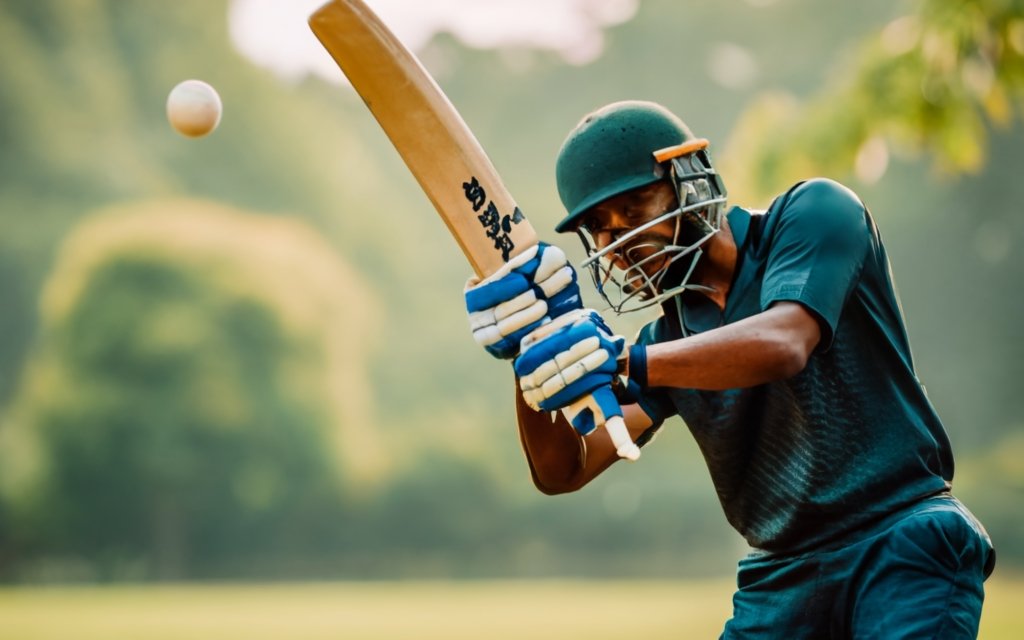

Are you ready to take your cricket batting skills to the next level? Well, get ready to unleash your power with these 13 proven techniques.
Did you know that power hitting can increase your run rate by an astonishing 35%? That’s right, with the right techniques, you can dominate the game and leave your opponents in awe.
From perfecting your stance to mastering bat swing path, this article will equip you with the tools to elevate your power hitting skills and become a true force on the cricket field.
Key Takeaways
- Developing a strong and balanced stance with proper weight distribution is crucial for maximizing power generation in cricket batting.
- Effective shot selection and grip techniques are important for optimal power execution and control.
- Timing techniques, including adjusting balance and shot execution, play a significant role in achieving maximum impact.
- Proper weight transfer techniques, such as explosive hip rotation and maintaining balance control, are essential for power generation and efficiency in batting.
Stance Techniques
Do you struggle with cricket power hitting? Mastering stance techniques is essential to improving your cricket batting and power.
A solid, balanced stance is essential for optimum shot force. Improve your power hitting by maintaining balance. Distributing your weight evenly between both feet provides a stable base for force.
Additionally, hip rotation is crucial to power creation. Explosively twisting your hips toward the shot helps transfer energy during your swing.
Maintaining a stable head position during the shot ensures accurate alignment and power transfer. Hand-eye coordination helps you track and hit the ball accurately.
Lastly, shot selection plays a significant role in power hitting. Identifying the right delivery and selecting the appropriate shot to execute with power can make all the difference.
Grip Techniques
Grip techniques will help you strike harder and have more control in cricket.
Grip pressure is key to this. You may grasp the bat securely without sacrificing flexibility by applying the correct pressure.
Consider grip width. A wider grip gives you more leverage and power to swing the bat harder.
Finger location matters too. Control and power are improved by placing your top hand near the handle and your bottom hand somewhat below.
Additionally, grip alignment matters. You can hit harder by positioning the V-shaped space between your thumb and forefinger nearer the back of the bat.
Finally, adjust the grip as needed. Try multiple methods to find what works for you, and practice often to build muscle memory and grip.
Timing Techniques
Now, let’s explore timing techniques to further enhance your power hitting in cricket. Mastering these techniques will allow you to maximize your shot selection, adjust your balance, execute shots effectively, and conquer challenging situations like playing against spin or pace.
Here are five key timing techniques to elevate your power hitting skills:
- Shot selection: Choose the right shot based on the line, length, and pace of the delivery.
- Balance adjustment: Maintain a solid base and adjust your body position to align with the trajectory of the ball.
- Shot execution: Time your shot to perfection, ensuring the bat makes contact with the ball at the right moment.
- Playing against spin: Anticipate the spin and adjust your footwork and timing accordingly to counter the turning ball.
- Playing against pace: Gauge the speed of the delivery and synchronize your movements to strike the ball with maximum power.
Weight Transfer


13 Proven Power Hitting Techniques to Elevate Your Cricket Batting Skills
To further enhance your power hitting in cricket, focus on mastering the crucial technique of weight transfer. Proper weight transfer allows you to generate maximum power and bat speed, resulting in explosive shots. It involves shifting your body weight efficiently to optimize your swing. Five key elements contribute to effective weight transfer: body alignment, hip rotation, balance control, core strength, and weight distribution.
| Weight Transfer Techniques | Description |
|---|---|
| Body Alignment | Align your body towards the intended direction of the shot for optimal power generation. |
| Hip Rotation | Rotate your hips explosively to generate torque and transfer energy from your lower body to your upper body. |
| Balance Control | Maintain a stable and balanced stance throughout your stroke to ensure maximum power transfer. |
| Core Strength | Develop a strong core to stabilize your body during the weight transfer process and generate power efficiently. |
| Weight Distribution | Distribute your weight evenly between your front and back foot to maintain stability and generate power from both sides. |
Bat Swing Path
Continue building on your power hitting skills by mastering the crucial technique of directing your bat swing path. The bat swing path is a fundamental aspect of power hitting that can greatly impact your ability to generate maximum force and distance.
To optimize your bat swing path, consider the following key elements:
- Hip rotation: Engage your hips and rotate them towards the desired direction of the shot, enabling a strong and explosive swing.
- Follow through technique: Maintain a smooth and extended follow-through after making contact with the ball, allowing for a complete transfer of power.
- Bat speed: Focus on increasing your bat speed through proper timing and coordination, maximizing the impact on the ball.
- Wrist position: Keep your wrists firm and aligned with the bat, ensuring a solid connection and transfer of energy.
- Angle of attack: Position yourself to strike the ball at the optimal angle, allowing for a clean and powerful hit.
Mastering these aspects of the bat swing path will help you unleash your full power potential at the crease.
Muscle Memory
It is essential that you gain an understanding of the function that muscle memory plays in the improvement of cricket batting technique as you continue to work on developing your power hitting talents.
The ability of your muscles to recall and carry out certain motions automatically without the need for conscious effort is referred to as muscle memory. It is something that may be developed via practice and can significantly improve a player’s batting performance.
Include in your training a variety of training aids, such as batting tees, weighted bats, and resistance bands, so that you may improve your technique and build up your muscle memory.
In addition, cognitive training exercises can help you increase your ability to focus as well as your ability to make decisions when you are competing.
Visualization
Imagine yourself confidently stepping onto the cricket pitch, visualizing each powerful shot before it even leaves the bowler’s hand. Visualization is a crucial tool that can help you overcome performance anxiety and elevate your cricket batting skills. By incorporating imagery techniques, goal setting, concentration exercises, and a strong mind-body connection, you can enhance your performance on the field.
- Performance anxiety: Visualizing success helps alleviate anxiety and boosts confidence.
- Imagery techniques: Use all your senses to create vivid mental images of your ideal shot.
- Goal setting: Set specific goals for each match or practice session to focus your visualization efforts.
- Concentration exercises: Improve your ability to stay focused and ignore distractions.
- Mind-body connection: Visualize the perfect shot while also feeling the physical sensations of executing it.
Ball Tracking
To improve your power hitting skills in cricket, develop your ability to track the ball with precision and accuracy. Ball tracking is an essential skill that allows you to anticipate the trajectory and speed of the ball, enabling you to make split-second decisions and execute powerful shots.
Tracking the ball effectively requires a combination of visual acuity, focus, and quick reflexes. To enhance your ball tracking skills, it’s crucial to familiarize yourself with different bowling variations, such as spin, swing, and pace.
Additionally, understanding fielding techniques can help you anticipate the direction and speed of the ball after it’s hit. Good fitness and conditioning are also important, as they contribute to your agility and reaction time.
Lastly, employing effective batting strategies and using the right cricket equipment can further enhance your ability to track the ball and unleash your power hitting potential.
Footwork


Improve your power hitting skills in cricket by developing precise and agile footwork. Footwork is crucial in generating power and maintaining balance while facing bowlers. Here are some key techniques and training exercises to enhance your footwork:
- Balance techniques: Work on maintaining a stable base and distributing your weight evenly.
- Agility training: Incorporate ladder drills and cone exercises to improve your foot speed and coordination.
- Footwork drills: Practice lunges, forward and backward movements, and quick changes in direction to enhance your footwork skills.
- Reaction time: Train your reflexes by practicing drills that require quick movements and immediate responses.
- Speed and quickness exercises: Engage in explosive movements and sprints to develop speed and agility.
By honing your footwork, you’ll be able to react swiftly and position yourself effectively for powerful shots.
Now, let’s delve into the importance of the ‘backlift’ technique in maximizing your batting potential.
Backlift
To improve your cricket power striking, acquire a strong backlift. The backlift is your bat position before a shot. It’s essential for power and shot direction.
The delivery and shot you play determine the backlift variant you use. A higher backlift gives you more power, especially against fast bowling. It also lets you swiftly modify your bat angle and hit precise shots when playing spin.
Your backlift determines which shots you can play effectively. You may improve your power striking and batsmanship by learning backlift.
Mental Focus
Developing a strong mental focus is crucial for elevating your power hitting skills in cricket. To achieve peak performance, it’s essential to train your mind as well as your body. Here are five key techniques that can help you enhance your mental focus:
- Breathing exercises: Deep, controlled breathing can help calm your mind and improve focus during high-pressure situations.
- Concentration techniques: Practicing mindfulness and focusing on the present moment can help block out distractions and maintain concentration.
- Meditation practices: Regular meditation can sharpen your mental clarity, reduce anxiety, and improve overall focus and attention.
- Mental imagery: Visualizing successful shots and positive outcomes can build confidence and improve your ability to execute shots effectively.
- Positive self-talk: Encouraging yourself with positive affirmations and constructive self-talk can boost confidence and maintain a strong mindset.
Practice Drills
To enhance your power hitting skills in cricket, incorporate specific practice drills that focus on improving your batting technique and strength. Shot selection, power generation, shot placement, reaction time, and shot execution are all crucial aspects to consider when practicing power hitting.
By practicing shot selection drills, you can train your ability to choose the right shot for different situations, maximizing your chances of hitting the ball with power.
Power generation drills, such as using resistance bands or weighted bats, can help you develop the strength needed to generate more power in your shots.
Shot placement drills can improve your ability to place the ball in gaps and find boundaries.
Reaction time drills, like facing fast bowlers or using reaction balls, can sharpen your reflexes.
Finally, shot execution drills focusing on proper technique and follow-through can help you hit the ball with maximum power and control.
By incorporating these practice drills into your training routine, you can elevate your power hitting skills and become a more formidable batsman.
Transitioning into the subsequent section about ‘analyzing matches’, it’s important to analyze your performance in practice sessions and matches to identify areas for improvement and further refine your power hitting skills.
Analyzing Matches
As you progress in improving your power hitting skills through practice drills, it’s crucial to analyze matches to further refine your technique and identify areas for improvement.
Here are key aspects to focus on during match analysis:
- Shot selection: Analyze the shots you played in different situations and evaluate their effectiveness in scoring runs quickly.
- Field placement: Study the fielding positions set by the opposition and identify gaps to exploit for boundary-hitting opportunities.
- Bowling strategies: Examine the bowling tactics used against you, such as variations in pace, line, and length, to develop counter-strategies.
- Run rate analysis: Assess the rate at which you scored runs and identify periods of acceleration or deceleration to optimize your scoring rate.
- Player statistics: Review your personal statistics, such as batting average, strike rate, and boundaries hit, to track your progress and set targets for improvement.
Frequently Asked Questions
How Can I Improve My Hand-Eye Coordination While Batting?
To improve your hand-eye coordination while batting, focus on visual tracking, reaction time, and peripheral vision. Enhance your hand-eye synchronization through targeted drills that challenge your reflexes and aim for power hitting.
What Are Some Common Mistakes to Avoid When It Comes to Footwork in Cricket Batting?
To avoid common footwork mistakes in cricket batting, focus on proper foot positioning and staying balanced. Incorporate footwork drills to improve technique and enhance power. Correcting footwork errors leads to a more effective batting performance.
How Can I Develop a Strong Backlift in My Batting Technique?
To develop a strong backlift in your batting technique, focus on improving your grip for maximum power. Strengthen your core through exercises that enhance your batting technique. Practice timing drills and work on increasing wrist flexibility for better shot execution. Utilize visualization techniques to anticipate the bowler’s delivery.
What Are Some Effective Ways to Track the Ball Better While Batting?
To track the ball better while batting, incorporate eye training exercises for improved ball tracking. Utilize peripheral vision to enhance your technique. Anticipation plays a vital role in tracking the ball. Improve depth perception and use visual cues to elevate your skills.
How Can I Maintain Mental Focus and Concentration While Batting in a High-Pressure Situation?
To maintain focus and concentration while batting under pressure, you must handle the pressure and stay composed. It’s crucial to train your mind to block out distractions and visualize success, enabling you to perform at your best.
Conclusion
In conclusion, implementing these proven power hitting techniques will undoubtedly transform your cricket batting skills into a force to be reckoned with.
By mastering the correct stance, grip, timing, weight transfer, bat swing path, and backlift, you’ll elevate your game to new heights.
Coupled with mental focus and consistent practice drills, you’ll be able to refine your technique and develop a strong mindset.
Just like an artist perfecting their brushstrokes, these techniques will enable you to paint a masterpiece on the cricket pitch and leave a lasting impact on the game.





“Hello, I’m Manish Dangi, the driving force behind cricketvalue.com. As a dedicated cricket writer and enthusiast, I bring you the latest insights, updates, and stories from the dynamic world of cricket. With a keen eye for detail and a love for the game, I aim to provide a valuable perspective on matches, players, and trends. Feel free to reach out at [email protected]. Let’s celebrate the spirit of cricket together at CricketValue!”
-



 Batting Tips10 months ago
Batting Tips10 months ago13 Proven Power Hitting Techniques to Elevate Your Cricket Batting Skills
-



 Batting Tips11 months ago
Batting Tips11 months agoFree Hit in Cricket – Rules & Penalty
-



 Knowledge Base8 months ago
Knowledge Base8 months agoMost Runs in Women’s Cricket | Batting Records
-



 Player Stats11 months ago
Player Stats11 months agoWho is MS Dhoni’s Wife- All You Need to Know
-



 IPL11 months ago
IPL11 months agoWhat Is IPL Umpire Salary? 1.98L?
-

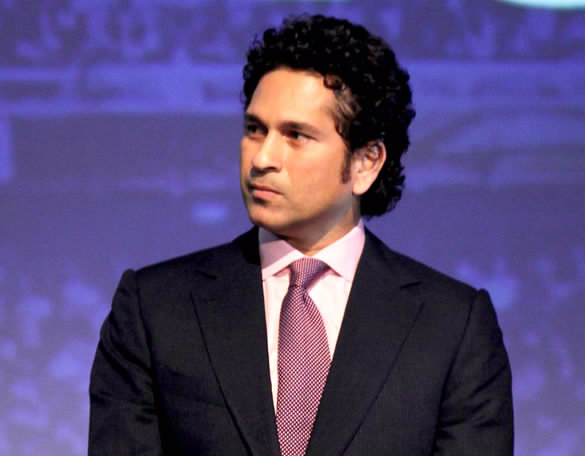

 Bat11 months ago
Bat11 months agoSachin Tendulkar’s Bat- All You Need to Know
-



 Blog11 months ago
Blog11 months agoDifference Between A Wide And a No-Ball?
-

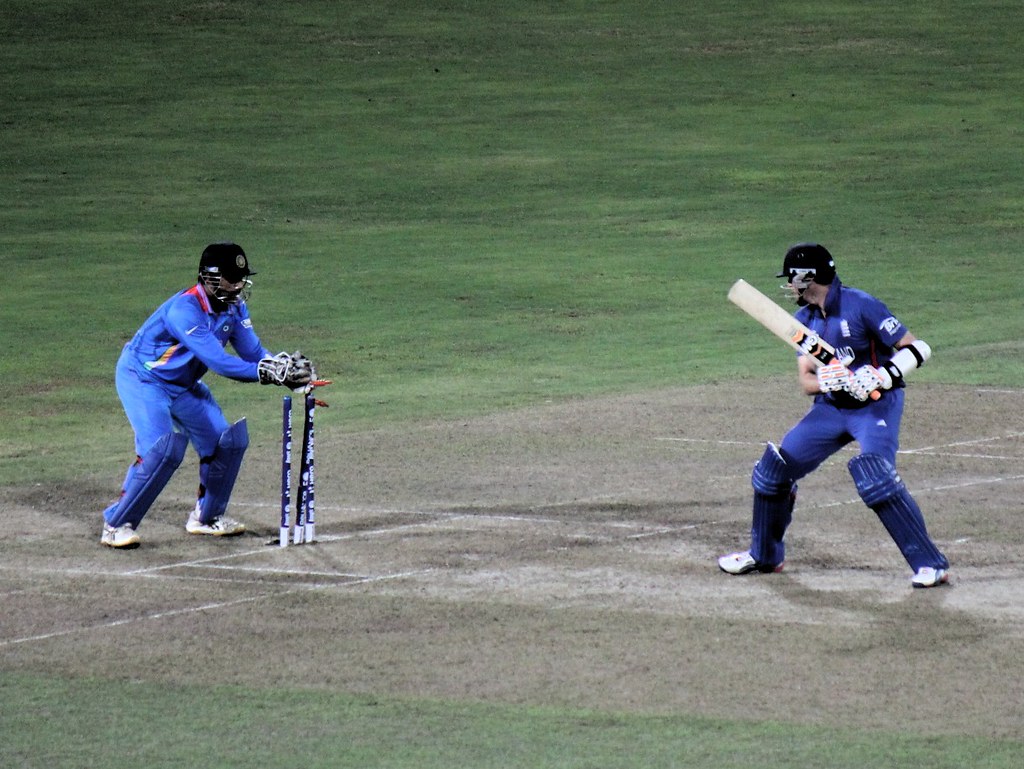

 Blog11 months ago
Blog11 months ago11 Fastest Stumping in Cricket History
